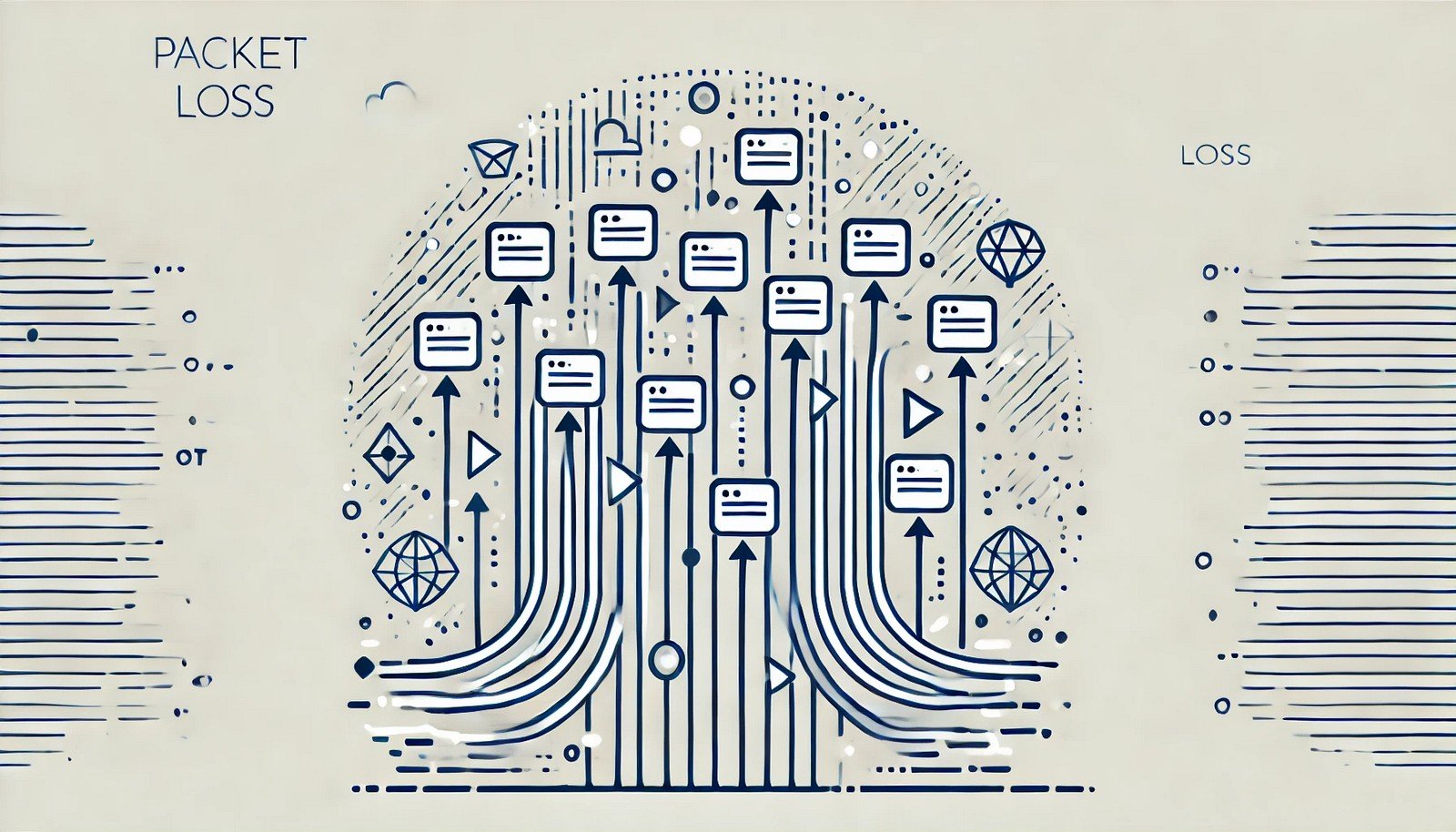Packet Loss
 (Representational Image | Source: Dall-E)
(Representational Image | Source: Dall-E)
Quick Navigation:
- Packet Loss Definition
- Packet Loss Explained Easy
- Packet Loss Origin
- Packet Loss Etymology
- Packet Loss Usage Trends
- Packet Loss Usage
- Packet Loss Examples in Context
- Packet Loss FAQ
- Packet Loss Related Words
Packet Loss Definition
Packet loss refers to the failure of data packets to reach their intended destination across a network. This can result from network congestion, hardware issues, software errors, or signal interference in wireless networks. When packets are lost, communication may slow down, become unreliable, or experience noticeable degradation in quality, especially in real-time applications like VoIP, online gaming, and video streaming.
Packet Loss Explained Easy
Imagine you’re sending a letter to a friend, but some letters get lost in the mail and never arrive. When that happens, your friend might not understand your message properly. Packet loss is similar—when data travels across the internet, sometimes small pieces (packets) get lost, causing delays, missing information, or even making videos and calls choppy.
Packet Loss Origin
The concept of packet loss has been around since the early days of computer networking. As networks grew in complexity and size, engineers developed protocols like TCP/IP to handle packet transmission and recovery.
Packet Loss Etymology
The term "packet loss" originates from "packet," which refers to a unit of data transmitted over a network, and "loss," which indicates failure in delivery.
Packet Loss Usage Trends
With the rise of cloud computing, video conferencing, and real-time multiplayer gaming, packet loss has become a critical issue in modern networking.
Packet Loss Usage
- Formal/Technical Tagging:
- Networking
- Data Transmission
- Telecommunications - Typical Collocations:
- "packet loss troubleshooting"
- "high packet loss in network"
- "packet loss mitigation strategies"
- "reducing packet loss in VoIP"
Packet Loss Examples in Context
- A gamer experiencing packet loss might see lag, rubberbanding, or even get disconnected from an online match.
- VoIP calls suffer from packet loss, causing dropped words and robotic-sounding voices.
- Streaming services use buffering techniques to counteract packet loss and provide smooth playback.
Packet Loss FAQ
- What is packet loss?
Packet loss occurs when data packets traveling across a network fail to reach their intended destination. - What causes packet loss?
Common causes include network congestion, faulty hardware, software errors, and wireless interference. - How does packet loss affect performance?
It can cause slow data transmission, lag in online applications, and poor audio/video quality. - How can I check for packet loss?
You can use tools like Ping, Traceroute, or specialized software like Wireshark to diagnose packet loss. - How can I fix packet loss?
Solutions include upgrading network hardware, optimizing QoS settings, and reducing network congestion. - Why is packet loss worse in wireless networks?
Wireless networks are more susceptible to interference from obstacles, electronic devices, and environmental factors.
Packet Loss Related Words
- Categories/Topics:
- Networking
- Internet Performance
- Network Troubleshooting
Did you know?
Packet loss was a major problem in early space communication. NASA engineers had to develop sophisticated error correction techniques to ensure data transmission from space probes remained reliable.
PicDictionary.com is an online dictionary in pictures. If you have questions or suggestions, please reach out to us on WhatsApp or Twitter.Authors | Arjun Vishnu | @ArjunAndVishnu

I am Vishnu. I like AI, Linux, Single Board Computers, and Cloud Computing. I create the web & video content, and I also write for popular websites.
My younger brother, Arjun handles image & video editing. Together, we run a YouTube Channel that's focused on reviewing gadgets and explaining technology.



Comments powered by CComment